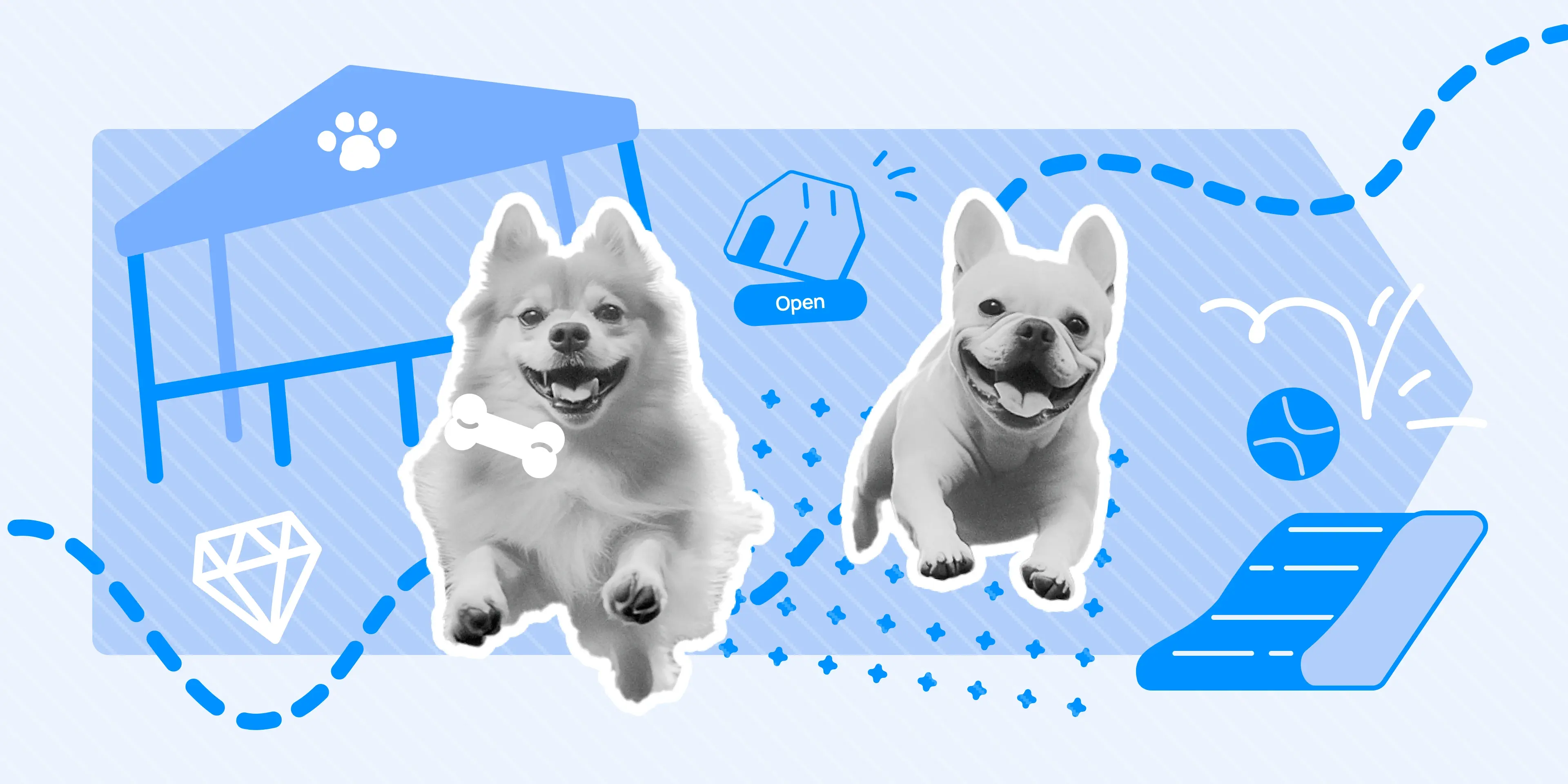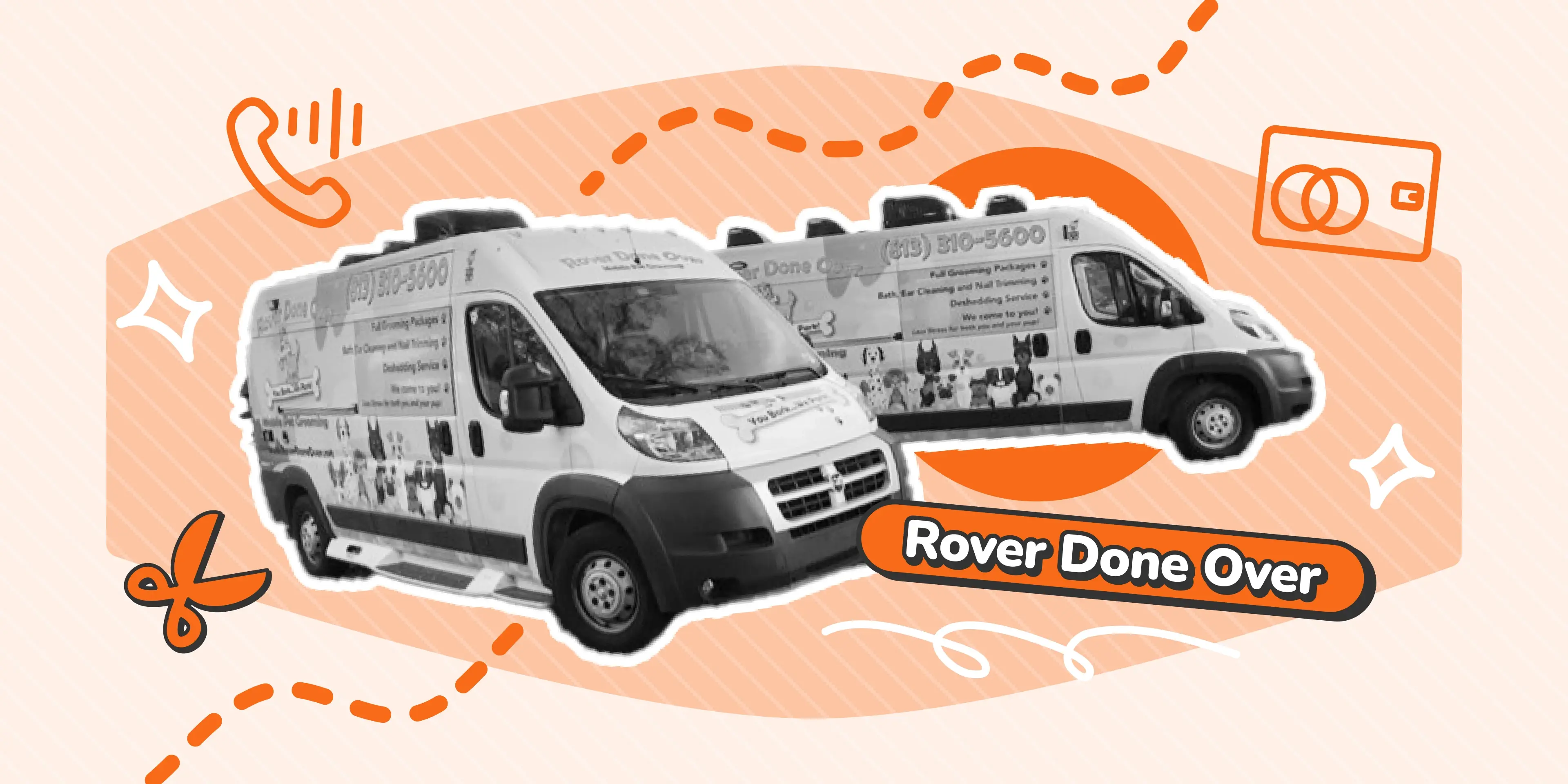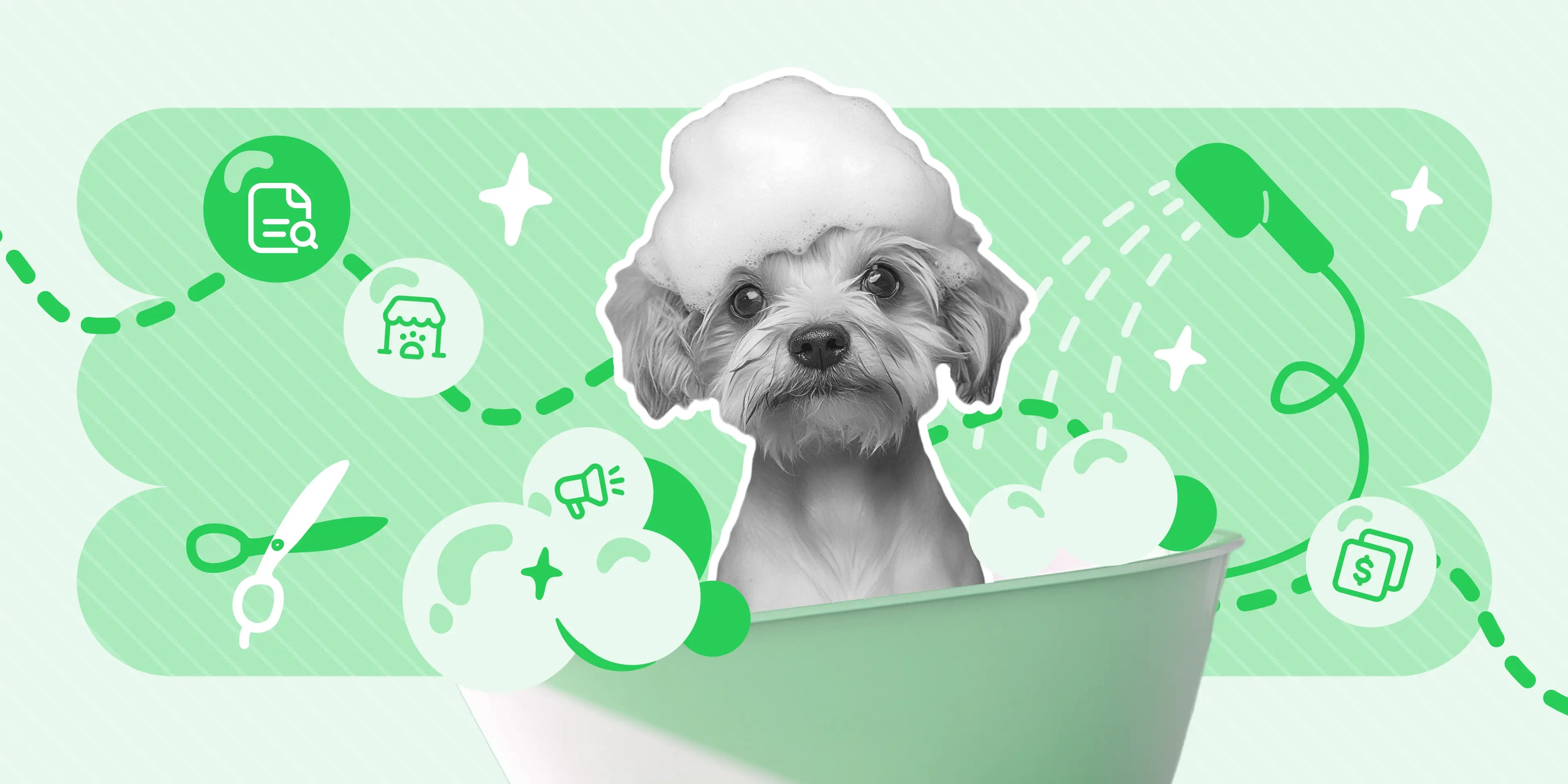Share this
How to Start a Successful Dog Boarding Business
by MoeGo on Apr 14, 2025 12:53:47 PM
If your dream job has always been to play with dogs all day, starting a dog boarding business might sound like a no-brainer. Still, being a business owner is hard — especially when you run a business that never truly closes like a pet boarding business. Luckily, we’ve got you covered with this step-by-step guide that will have you on your way to opening a dog boarding business in record time.

Why Start a Dog Boarding Business?
In case you haven’t heard lately, there’s an ever-growing demand for pet care services. More and more people are welcoming a furry friend into their homes and hearts — and those people all need a place for their bonus family member to stay when they need to head out of town.
There are many benefits to running a pet boarding business. First, of course, is the chance to hang out with cool dogs all day. There’s also the knowledge that you are providing pet owners a caring place to leave their pet when they need to, whether they are working, on vacation, or unexpectedly out of town. And the chance to run your own business and be your own boss while doing something you love? That makes opening a dog boarding business a dream come true for many dog lovers.
Researching Your Dog Boarding Business Idea
Before you sign a lease on a location or start ripping up your backyard to build kennels, definitely check in with your local government entity on what rules and regulations a dog kennel business needs to follow. Some local governments will have very few regulations, and others will have many — even if you plan to run a home-based dog boarding business. Pet boarding businesses are required to comply with basic health and safety standards for pets, but those vary depending on your area. The only way to know what those regulations are is to call your local government office and get the details that are specific to your location.
Your local economic development office will also help you navigate any zoning laws you may encounter, as well as help identify if your pet boarding business will need a sales tax permit (if you’re selling products in addition to providing boarding services, you will need one).
Once you’ve got the go-ahead from your city or county government, it’s time to do some market research. Is there enough demand in your area to justify adding a dog boarding location where you want to operate? Are current boarding facilities often fully booked, or do friends, family, or other dog owners you know complain about not being able to get their pet into a facility when they need to? If so, there’s likely enough demand to justify starting a dog boarding business.
As you research pet boarding facilities in your area, take into consideration who you might be competing with. What is the top-of-the-line kennel in your area — will you try to compete with them on the kinds of services offered, or will you carve out your own niche? What are their rates? And what might your rates need to be to ensure that you can cover your estimated expenses? There’s a lot to consider when you decide to start a dog boarding business.
Setting Up Your Dog Boarding Business
In addition to the market research, you’ll need to think through some of the key components of a dog boarding business plan. Begin to ask yourself some of the following questions:
- Will you purchase or lease a space?
- Will your target audience be a specific size or breed of dogs?
- Do you want to do dog daycare in addition to overnight dog boarding?
- Will you offer any pet grooming services or training in addition to boarding?
- How many dogs do you think you can handle overnight vs. during the day?
- Will you hire employees, or handle the work yourself for now?
- What are your plans for marketing your new business?
- What software, tools, or tech can you incorporate to help your business thrive?
Once you think you have a handle on what your business might look like, it’s time to get some estimates on what it all might cost and if your dog boarding business is financially feasible right now.
Create a Budget for Your Pet Boarding Business
When starting to form a business plan for your dog boarding business, you’ll need to consider your financial goals and a startup budget. Do you have money to invest into the business? Will you apply for a loan? Speaking with a small business banker may be a good start. Many can offer example budgets to help you gauge what’s the normal amount to spend on rent, utilities, and more.
Step 1: Calculate Your Projected Revenue
Figure out how many dogs you will be able to board at once and multiply that by your per-night cost that you’ve chosen. Multiplied by 30, this is the maximum basic income you can expect to take in your first month of business.
Make sure to set your business up so that you have some wiggle room in your budget until your pet boarding business is established. It’s unlikely that you will be 100% booked from Day One, so don’t calculate your projected income from that perspective.
It’s also smart to have policies in place before you open that detail consequences and fees for late pickups, cancellations, and no-shows. You can’t count on these fees as potential income, but you sure will lose out on revenue if you don’t charge them from the beginning.
Step 2: Subtract Your Projected Fixed Expenses
Your rent, insurance costs, employee costs, and utilities will all be recurring costs each month. Once you have estimates for each of those, you can subtract this total from your projected revenue. If your fixed expenses are close to or over the amount you project in revenue, you may need to consider raising that nightly rate you were considering, or figuring out a more economical way to deliver your business.
And don’t forget to factor in a salary for yourself — this may change as your business grows and contracts, but if you don’t plan to pay yourself from the start, you may not work it into the budget for far too long.
Step 3: Have a Contingency Plan
There are going to be bumps in the road as your pet boarding business gets off the ground. Plan for these, and they’ll feel a lot less derailing. If you can set aside some cash before you open in case of emergencies, that’s ideal. If you can’t, make sure you discuss with a business banker what kinds of lines of credit or business loans you may qualify for in the future if your business needs cash instantly to deal with an emergency.
Step 4: Determine Your Profit & Plan Accordingly
Once you have your estimated income and expenses, you can see what kind of wiggle room you have and if you’re ready to launch your dog boarding business.
Securing the Right Location and Facility
Location, location, location. It matters in real estate, and in service-based industries like dog boarding. It might seem like a no-brainer, but make sure you are selecting a location in an area where there are lots of dogs! A high-traffic area makes sense so that you are visible and convenient for pickups and dropoffs, but too much traffic can stress out your canine companions — and pose a risk if a dog happens to slip out the door without a leash.
And as much as you are considering your potential boarding clients as you select a location, make sure to consider yourself, too. A long commute will dampen some of the joy of owning your own business, and high-traffic areas can also be really expensive.
One thing to remember: your first location doesn’t have to be your forever location. Lots of businesses move as they grow, so don’t be afraid to pick a dog boarding location that feels like you might outgrow it. Starting with less space than you think you need is better than so much space that you can’t afford it.

Understanding Insurance Requirements
By now, you’ve already talked to your local zoning department and gotten everything squared away with licenses, permits, and zoning for your dog kennel.
Another thing to consider is the insurance coverage your dog boarding business needs. The most basic coverage to start with is general liability insurance, which will protect your business from basic claims regarding injury or damages. An essential coverage for a pet boarding business is animal bailee insurance, also known as care, custody, and control insurance. This protects you and your business in the case of the unimaginable: an animal dying while in your care. You’ll likely also need to set up commercial property insurance, which protects your physical building and assets from storms, accidents, and more.
You should also consider commercial auto insurance if the kennel owns any vehicles as part of its business model, and if you hire employees, workman’s comp insurance and employee bonding should be on your radar as a business owner.
Last, but not least, consider a written policy that outlines what will happen for any dogs that misbehave toward other pets and toward you or your kennel employees. Local government regulations often have a protocol in place for any dog bite situations, so make sure you have a copy of those handy to refer to — and to provide to the owner(s) of any dogs involved in the incident.
Designing and Equipping Your Pet Boarding Facility
You began to think about your budget above, and now’s the time to think about the must-have dog boarding equipment and supplies you’ll need to set up your new dog boarding facility so that you can factor it all into your startup budget. At the most basic level, you’ll need to be able to separate dogs from different households, so kennel panels or separate rooms will be necessary. Here’s a list of other equipment to consider for your dog boarding business:
- Indoor and outdoor play spaces
- Food and water bowls
- Dog beds that can be sanitized in-between uses
- A locked cabinet for any prescription medications
- Extra collars, leashes, and harnesses
- Basic first aid supplies — for humans and for dogs
- Cleaning supplies for all surfaces
- Chew toys and other dog toys for playtime
- And of course, treats for all those good doggies (make sure they’re owner-approved!)
Once you’ve nailed down the essentials, consider what else might be on your wish list for creating a comfortable and fun environment for dogs. Agility-inspired obstacles and ramps are a great way to provide exercise for multiple dogs at a time — especially if you’d rather not end up in a tangle of leashes while on a multi-dog walk. Dog toys that provide enrichment opportunities at feeding time are also a great option. Just remember to stick to your startup budget — there’s lots of time to invest more into your dog boarding business as it grows.
Building a Reliable Pet Care Team
As a new business owner, you’ll likely be extremely hands on at first, keeping tabs on your budding business and all the awesome pets you get to work with. Still, you are human, and you can’t be available 24/7 for months on end. At some point, you’ll need to build a reliable team.
Oftentimes, the best way to find new employees is the same way to find new clients: word of mouth. Getting a recommendation to hire from someone you trust can go a long way in ensuring that you find the reliable dog boarding help you are looking for. You can also advertise in locations that other pet-lovers are likely to be: at local veterinarians, local vet tech schools, and pet supply stores, to name a few. You’ll want to hire people who are passionate about dogs, are able and willing to be available when you need them to be, and who can follow the policies that you create for your business and for your employees.
[Want some pro-tips from a true professional? Our MoeGo community member Platinum Paws has built an all-star team and are here to tell all about it.]
And we can’t fail to mention that our MoeGo Pet Boarding Software makes an excellent addition to your pet care facility team. AI-assisted scheduling and alerts to help staff and owners keep vaccination certifications up-to-date are like adding a 24/7 administrative assistant who never has an off day — or takes a day off.
Attracting Clients to Your Dog Boarding Business
Again, word of mouth is going to be your best friend. Talk to your friends, family, and your own veterinarian or pet supply store manager. The demand for pet care services is at an all-time high — odds are they know someone who is looking for another option for dog boarding in their area. If you are generous with your praise of the service providers you love (where praise is due, of course), they’ll likely hear about it. Before you know, you and your network will be drowning in referrals.
Set up a clear and easy-to-navigate website for clients to find you online. Make flyers and add a QR code that points right to your online booking page. Have business cards and hand them out when you meet new dog friends at the dog park or the local dog-friendly outdoor patio — offering a one-time discount code for first-time clients never hurts, either. MoeGo has integrated marketing solutions for dog boarding businesses, too, so you can stay top-of-mind with clients once they try you out that first time.
Don’t Survive, Thrive: Smooth Operations & Scalable Growth
Business is great. You’re fully booked… and then some. Oops.
With an all-in-one dog boarding software like MoeGo, those airline-style mistakes are a thing of the past. Our customizable and user-friendly software solutions offer pet care business owners the joy of smooth operations that scale to meet their needs.
A single software that all employees are trained to use also eliminates those post-it notes with scrawling handwriting that don’t quite make sense… all pet notes are made in the software, so everyone can see everything they need about each and every dog at your facility. Pet profiles help owners keep themselves up to date on vaccinations and medications, too, eliminating those terrible moments when a dog arrives for dropoff and can’t stay because you just now realize their rabies certificate has expired.
MoeGo pet business software can also help your business expand into the dog daycare market, the pet grooming market, and more as you grow, without having to add on additional systems to your workflow — meaning that a thriving pet boarding business is just the beginning.
Your Path to Success in Dog Boarding
As you build your business, keep in mind that not every dog is a good fit for your kennel. New business owners often feel like they have to say “yes” to everyone who is willing to give them a try. Sometimes, saying “no” is the best thing you can do — for yourself, your business, and your clients.
So don’t continue to work with dogs that make you uncomfortable, or owners who have a reputation for asking too much of you and your team, but are unwilling to compensate you fairly. There are plenty of great pets and great pet owners out there looking to work with a pet care professional like you.
With a clear business plan, a solid budget, and a love for furry friends and their owners, you are ready to tackle opening your own dog boarding business and make it a success.

How to Start a Successful Dog Boarding Business

How Rover Done Over Streamlined Operations and Boosted Cash Flow

How to Start a Dog Grooming Business: A Step-by-Step Guide
Share this
- April 2025 (5)
- March 2025 (6)
- February 2025 (4)
- January 2025 (8)
- December 2024 (7)
- November 2024 (6)
- October 2024 (3)
- September 2024 (1)
- August 2024 (2)
- July 2024 (1)
- May 2024 (2)
- April 2024 (1)
- March 2024 (3)
- February 2024 (3)
- January 2024 (2)
- December 2023 (6)
- November 2023 (7)
- October 2023 (7)
- September 2023 (8)
- August 2023 (7)
- July 2023 (3)
- June 2023 (2)
- May 2023 (4)
- April 2023 (2)
- March 2023 (9)
- February 2023 (1)
- January 2023 (1)
- December 2022 (1)
- November 2022 (5)
- October 2022 (1)




